Fast breeders
Beloyarsk NPP has received a license of Rostechnadzor for installation of Unit 5 BN-1200M reactor plant
Rosatom started key installation operation of 2024 at Gen IV research reactor MBIR
Rosatom manufactures nitride and oxide uranium-plutonium fuels for the BN-1200 fast reactor
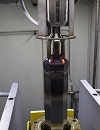 Rosatom starts afterburning of minor actinides in a fast reactor
Rosatom starts afterburning of minor actinides in a fast reactor
During the scheduled refueling at the Beloyarsk NPP Unit 4, its BN-800 fast neutron reactor has been for the first time loaded with lead-test assemblies of uranium-plutonium MOX fuel also containing the so-called minor actinides, the most radiotoxic and long-lived components from irradiated nuclear fuel.
The loading of innovative fuel into the reactor core was approved by the Russia authorized regulator Rostekhnadzor (the Federal Service for Environmental, Technological and Nuclear Supervision), which had confirmed its safe operation. The power unit has resumed operation after the refueling.
The three lead-test MOX bundles containing americium- 241 and neptunium-237 were manufactured at...
 PFBR-500 - start of fuel loading
PFBR-500 - start of fuel loading
Fuel loading into the reactor core will begin today at the PFBR unit under construction in India - also known as PFBR-500, a demonstration unit with a fast sodium reactor.
Indian Prime Minister Narendra Modi, who is visiting Tamil Nadu, intends to observe the start of the fuel loading, as reported in the Indian media.
Marking a historic milestone in India's nuclear power programme, Prime Minister will witness the initiation of core loading of India's indigenous Prototype Fast Breeder Reactor(PFBR) of 500 MWe capacity at Kalpakkam, Tamil Nadu, a government press release said.
The text of the release recalls that the reactor project was developed by the Indian company BHAVINI.
ROSATOM manufactures first bundles of BN-800 MOX fuel with minor actinides
ROSATOM takes part in the Meeting of the Committee on Non-Power Applications of Nuclear Technologies under the IRC MBIR Advisory Board
MBIR became a participant of the BRICS GRAIN International Platform
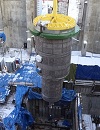 ROSATOM installs vessel of MBIR research reactor in design position
ROSATOM installs vessel of MBIR research reactor in design position
Installing the reactor vessel in its design position is a significant achievement of the work of a large team of like-minded scientists, engineers, designers, and builders. This is an important milestone in the MBIR reactor construction project, bringing us closer to installing reactor equipment and reaching the end of construction, which is already ahead of schedule. This means that we will get an advanced research infrastructure in a shorter amount of time, which will advance the study of two-component nuclear power engineering technology and our efforts to close the fuel cycle; it will help accelerate and justify the creation of safe fourth-generation nuclear power plants, and foster breakthrough research over the next 50 years. MBIR research reactor and PIK reactor are complementary...
TVEL ships fuel for CFR-600 fast reactor launch
Prospects for international partnership in the implementation of MBIR reactor project will be discussed within ATOMEXPO-2022
Westinghouse and Ansaldo Nuclear will collaborate on the development of a fast lead reactor
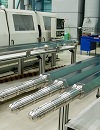 Rosatom starts supplies of nuclear fuel for CFR-600 fast reactor
Rosatom starts supplies of nuclear fuel for CFR-600 fast reactor
Elemash Machine-building Plant, a fuel fabrication enterprise of Rosatom TVEL Fuel Company, has dispatched the first batch of nuclear fuel to China for the CFR-600 fast neutron reactor. Till the end of the year, two more fuel shipments are scheduled to follow, aimed for the initial load of the reactor core and the first refueling.
After the launch of the first CFR-600 power unit, Xiapu NPP in China Fujian province will become the first nuclear power plant with a high-capacity fast reactor outside of Russia. The other two functioning installations are the BN-600 and BN-800 sodium-cooled reactors at Beloyarsk NPP in the Urals region of Russia.
The project of fuel fabrication for CFR-600, lasting for already three years, has been a unique task for us in terms...
IFRES - the future of Chinese fast program
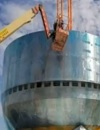 China - fast plans
China - fast plans
The FR22 International Conference on Fast Reactors and Associated Fuel Cycles was held at the IAEA Headquarters in Vienna from 19 to 22 April 2022.
Yang Hongyi from China Atomic Energy Institute CIAE gave a presentation on the current state of China fast program.
At present, PWR light water reactors are the backbone of China nuclear power industry. At the next stage of development, fast reactors should appear in the country, and fusion energy will become the third stage. In parallel with the development of reactor technologies, the development of the necessary fuel cycles is underway.
The tasks of fast reactors in China include increasing the efficiency of using uranium resources and transmuting...
Russian specialists present reports at IAEA Conference on Fast Reactors
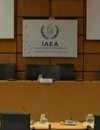 FR22 has completed its work
FR22 has completed its work
The International Conference on Fast Reactors and Related Fuel Cycles: Sustainable Clean Energy for the Future (FR22) concluded its work at the IAEA headquarters in Vienna on Friday.
At the final meeting, the organizers summed up the qualitative and quantitative results of the conference.
The conference was attended by 470 officially designated participants and 210 observers. The total number of contributors was 365.
The FR22 conference was the fourth in a row, and representatives of 35 countries took part in it. This is a record figure for the entire time of FR conferences, which indicates the growing interest in the world in the topic of fast reactors and closed nuclear fuel cycles.
International Conference on Fast Reactors and Related Fuel Cycles: Sustainable Clean Energy for the Future (FR22) is started in Vienna
TVEL shipped equipment to China for testing CFR-600
TVEL Elemash Machine-building plant launches new manufacturing site for CFR-600 fabrication
BN-800 fast reactor undergoes the first full refueling with MOX fuel
FR21 International Conference on Fast Reactors and Related Fuel Cycles will be hosted in Beijing
 In 2022, the first Russian NPP power block running fully on renewable fuel is to be launched
In 2022, the first Russian NPP power block running fully on renewable fuel is to be launched
In 2022, the 4th power block of the Beloyarsk NPP with a BN-800 fast-neutron reactor will be the first one in the history of our country to fully switch to uranium- plutonium MOX fuel. This will be an important step towards closure of the nuclear fuel cycle.
The full-scale transition of the Beloyarsk NPP BN-800 reactor to having a reactor core fully loaded with uranium-plutonium MOX fuel is planned for H1 2021. Fuel assemblies containing MOX fuel will be placed into the core, accounting for one-third of the total number of assemblies.
Since the beginning of the 4th power block operation and until now, the BN-800 has been operating a hybrid core combining fuel assemblies with uranium oxide fuel and those with tablet and vibration-consolidated MOX fuel.
The first batch of MOX fuel was loaded into the reactor at the Beloyarsk NPP
TVEL Fuel Company of Rosatom Supplied Fuel for China Experimental Fast Reactor
TVEL will supply nuclear fuel for China CFR-600 fast-neutron reactor
Rosatom Launches Batch Production of MOX Fuel for Fast Neutron Reactor
BN-800 is running at 100%
 Vladimir Poplavsky: It is Too Early to Compare Lead to Sodium
Vladimir Poplavsky: It is Too Early to Compare Lead to Sodium
As far back as in1949, Alexander Ilyich Leypunsky submitted to the Government an internal report in which he stated the fast technology potential in terms of nuclear fuel breeding; afterwards these ideas formed the basis for the concept of fast reactors. To a large extent, this concept is still very topical nowadays and not only in Russia.
 Dmitry Klinov: BFS is being renewed
Dmitry Klinov: BFS is being renewed
The task of the BFS retrofitting and upgrading arose in late 2010 as a consequence of the enormous difficulties that we had encountered in renewing the licence to operate our fast critical facilities.
These difficulties were, in turn, caused by functional obsolescence and physical wear on both permanent and scientific equipment that provides operation of the facilities.
The Federal Service for Environmental, Technological and Nuclear Supervision warned us that they will flatly refuse to renew the operating licence. There was no special-purpose funding for upgrading the BFS complex whereas the amount of work to be done was expected huge. Selection of the BFS complex for retrofitting and upgrading as part of the Federal Target Programme on new generation nuclear energy technologies proved a way out.
 JSC SSC RIAR and Korea Atomic Energy Research Institute signed the Memorandum of Understanding concerning the scientific and technical cooperation
JSC SSC RIAR and Korea Atomic Energy Research Institute signed the Memorandum of Understanding concerning the scientific and technical cooperation
The Memorandum of Understanding provides that both RIAR and KAERI (as the pivotal research institutions in the Russian Federation and in the Republic of Korea, respectively which are engaged in research and development in support of sustainable development of nuclear power industry) will focus their joint efforts on planning of joint research and development projects, organization and holding of technical meetings, preparation of joint publications as well as on implementation of joint programs for further development professional competence and expertise.
CEFR completes 100% power test
China may get a share in SVBR-100
BN-600 is at nominal power
China Wishes to Cooperate With Russia on Development of Fast Neutron Reactors
First-Ever Batch of Newest Nuclear Fuel Produces in Russia
NIKIET Institute Completes Design of BREST-300 Fast Reactor
Russia Planning 3 Advanced Fast-Breeder Reactors at Beloyarsk Nuclear Power Plant by 2030
Nuclear Chain Reaction to be Launched at Russia Fast-Neutron Reactor
Russia to Build WorldТs Largest MBIR Fast Neutron Nuclear Reactor
Russian Fast Neutron Nuclear Reactor Design Moves Forward
Russia, China in Fast Neutron Reactor Talks
 Technical Meeting on Design, Manufacturing and Irradiation Behaviour
Technical Meeting on Design, Manufacturing and Irradiation Behaviour
Fast reactors are vital towards meeting security and sustainability of nuclear energy in long-term perspective. They offer vastly more efficient use of uranium resources and the ability to burn actinides which are otherwise the long-lived component of high-level nuclear wastes. These reactors require development, qualification and deployment of improved and innovative nuclear fuel and structural materials with better properties combined with high radiation resistance. Nowadays, efforts are made on the design, manufacturing and study of the fuels behaviour under extreme operating conditions of temperature and irradiation.
Fast reactor fuels provide adequate long-term management of Pu and the minor actinides, thereby minimizing proliferation risks and waste repository requirements while still generating ample amounts of heat for energy, hydrogen, or water desalination. Considering the important role of nuclear fuels in fast reactor operation, R&D to advance the methods and tools used in the design and development of nuclear fuels is essential and needs to be constantly addressed.
Medvedev suggests wider use of fast-neutron reactors
Russia, India to develop new generation reactors
Russia proposes fast-breeder reactor cooperation program
Statement to International Conference on Fast Reactors and Related Fuel Cycles: Challenges and Opportunities
 Christophe Behar: ASTRID will be a demonstrator of innovative options
Christophe Behar: ASTRID will be a demonstrator of innovative options
We are preparing now a review of these design options and the decision has to be made in 2012, by the public authorities. ASTRID basic and detailed design will be launched afterwards if a green light is given, and we expect this important step to last five years, elaborates Mr. Behar.
FR spent fuel treatment and plutonium recycling will be based on current technologies (hydrometallurgy and melox base process). An evolution R&D is necessary but we already know that these technologies are basically suitable for fast reactor cycle. So the current recycling industrial experience is really a bridge between GII/GIII and GIV systems. This is possible since France consider only MOX fuel, or possibly carbide fuel in the future and both are suitable with Purex/Coex process.
The first and main goal of recycling is the multirecycling of plutonium, which is only possible in fast reactors and the coming R&D is to consolidate this objective.
We do also carry out R&D for minor actinides separation and transmutation in order to develop clean GIV cycle.
Atomstroyexport, CIAE and CNEIC signed a contract on preproject preparation of fast neutron reactors construction in China
 Steven Kirsch: I do not know anyone who has not come away impressed
Steven Kirsch: I do not know anyone who has not come away impressed
The IFR (Integral Fast Reactor) project was dead in Bill Clinton time but many people still believe in its resurrection. The scientists and engineers from the U.S. Argonne National Laboratory insist that their IFR/AFR concept will fully satisfy the criteria required for the 21st nuclear reactor. Recently they win one more supporter, Steven Kirsch.
Steven Kirsch, a multi-millionaire and businessman, is famous as the optical mouse inventor and patent owner. He is a philanthropist awarding by the U.S. National Caring Award and he was pretty agnostic about nuclear power. Now he changes his opinion after he learnt more about the IFR.
I do not know anyone with an open mind who has met with the scientists who worked on the project who has not come away impressed. Even the harshest critics of the IFR admit that that they might be wrong, Kirsch writes on his website. What are the reasons why the U.S. businessman is supporting the fast reactors? Can the Russians and Americans cooperate in the fast reactor programs?
 Georgy Toshinsky: lead - bismuth is ready for demonstration
Georgy Toshinsky: lead - bismuth is ready for demonstration
First of all it is important to stress that lead-bismuth technology was initially created and applied at the Soviet naval reactors - it is the project 705 (or the Alfa seria).
At first we didn't have necessary knowledge and experience. Naturally we faced a series of difficulties and failures at that stage. They were overcome thanks to the persistent work of a lot of organizations, first of all IPPE and OKB Gidropress. At serial submarines reactors were working successfully, though, certainly, experience of work with the naval reactors was not so huge as that of the NPPs operation.
At the same time Rosatom scientific-technical counsel has recognized this technology as prepared for the demonstration and included into the federal program for its realization at the pilot unit with SVBR-100 reactor.
The main advantage of this technology is modularity, that allows creating of power generating units of different capacity divisible by 100 MWe (el.) on the base of a uniformed reactor module that is implemented on the machine-building plant and completely finished is delivered by railway or other transport to the NPP site.
BN-350 reactor facility. Collected experience. Part 4.
Radiation safety completely totally corresponded safety regulations.
Radiation environment at BN-350 reactor facility was examined as higher capacity levels were mastered, and was controlled further during the operation. Research program included definition of radiation flows at the reactor junctions, coolant and shielding gas activity measurings. Matching of measurements and calculations was satisfactory.
In the rooms of the first circuit radiation environment at operating reactor was defined by 24Na (about 10 Cu/l). After reactor was stopped main role were playing 22Na isotopes, nuclides of corrosive origin, 137Cs and 134Cs, getting out through the fuel elements leakages. Radiation load over the personnel was insignificant and didn't exceed control levels.
Speaking about radiation environment near the facility location, it was safe during all the lifetime of the reactor and was defined by the radionuclides of the natural origin. Radioactivity emissions were only some percent from acceptable.
BN-350 reactor facility. Collected experience. Part 3.
By the designing of the control units and SG protection system a serious consideration was given to the detecting and localization of large leaks. Incidentally, designed systems coped with this task perfectly. But authoring control systems were very inertial to detect leaks timely.
In 1973 and 1974 BN-350 had eight leaks, including two large ones. Practically all of them appeared on the lower edge of the weld, which connected stamped bottom of the Fild pipe with the pipe itself. The result of the incidents was a withdrawal of the SG with the loop for repair, that demanded limitation of the facility capacity.
Repair, which is carried out by the defective pipes opacification, was not successful. By next SG launches leaks in the other pipes were appearing.
We managed to cope with this problem after the complete overhaul of the 5 SGs with the total replacement of the evaporator matrixes in 1974-1975. Fild pipes 32×2 mm with the stamped bottoms were replaced by the 33×3 mm pipes with the chiseled bottoms. Though we haven't managed to exclude leaks, but we have reduced their amount significantly.
 BN-350 reactor facility. Collected experience. Part 2.
BN-350 reactor facility. Collected experience. Part 2.
The topic of fast neutron reactors is of the top priority for our edition. We offer our readers to come back to the backgrounds of our nuclear fast neutron reactors program - the fast neutron reactor BN-350.
By the reactor facility BN-350 designing in the early sixties, the principle of maximum usage of natural physical processes was stated and sequentially realized. It had significantly simplified the facility, increased a reliability of exploitation and security, reduced the necessity of technological parameters automatic regulation and excluded the necessity of interfering of the personnel by the transitional processes and by various incidents.
It should be noted, that Russian fast sodium reactors appeared to be almost the first reactor facilities, which had been widely using natural physical processes. On the reactors of the other types the idea of using this principle was implemented only after serious incidents on NPPs (TMI-2 and Chernobyl).
Let us have a look at two examples of using natural processes in BN-350 project.
 BN-350 reactor facility. Collected experience. Part 1.
BN-350 reactor facility. Collected experience. Part 1.
First of all, Russian specialists planned to prove or to correct scientific and technique conceptions of fast neutron reactors while constructing and exploiting BN-350. It was rather important to specify BN peculiarities and processes, flowing both by normal operation and by abnormalities and incidents.
It was required to prove or to disprove the principal decisions on equipment constructions, on technological systems designing and on security principals. It was planned to examine reasonability and necessity of making changes in structural and circuit designs of fast neutron reactors, and to optimize them for the future facilities.
Undoubtedly, one of the main tasks of BN-350 was to achieve a practical experience of bringing into service of fast rector with sodium coolant. Domestic specialists had to learn operating conditions managing, to realize the rightness of foreseen precautions (or to detect an excess of this precautions), and finally, to optimize the behavior of personnel in different situations.
 Lev Kochetkov: from mercury to sodium, from BR-1 to BN-600
Lev Kochetkov: from mercury to sodium, from BR-1 to BN-600
Don't you know that sodium was not the first candidate for the role of a coolant for fast reactors? There were other candidates that seemed to be more promising than sodium.
In our country IPPE has made the most significant contribution to the development of fast reactors, certainly, by the great support from other domestic organizations. But fast reactors research has been started in the USA. Most important priority at first was to find the method of plutonium enrichment for military purpose.
First we had to guess, that fast neutron spectrum is capable of improving reproduction characteristics! A crucial role must have played Enrico Fermi.
Generally speaking, history of nuclear energy has examples of genius inspirations. I always remember the words of our compatriot academician V.I.Vernadsky, pronounced in 1922 about the prospects of nuclear energy. How could he at that time foresee the appearance of NPPs - it is mind-boggling, as all main discoveries that paved the way for using nuclear energy have been made later.
 Victor Murogov: work on preservation of nuclear knowledge continues
Victor Murogov: work on preservation of nuclear knowledge continues
I take part in realization IAEA's program for preservation of nuclear knowledge, which we have begun yet at that time when I was IAEA Director General Deputy - in 2001. This program was arisen in accordance with the proposal of developing countries under support of the West states, and now it is at the final stage of realization.
IAEA issued a set of reports containing the opinions of scientists about why it is necessary to take care of knowledge preservation just in nuclear power. Now the search of consensus is going regarding to understanding what namely should be preserved and how it is necessary to do it.
If to tell about the first item of work (why the nuclear knowledge deserves special concern) the corresponding guidance about specificity of nuclear knowledge was prepared by IAEA. It says about necessity of nuclear knowledge preservation for successful operation of NPP, for industry and nuclear safety.
 Fast, thermal, dry, wet - notes of the eyewitness
Fast, thermal, dry, wet - notes of the eyewitness
At the end of November the second international scientific-technical conference on the theme Development of nuclear power on the basis of closed nuclear fuel cycle (NFC) with fast neutron reactors was held under the aegis Rosenergoatom. The simultaneous participation of both reactor physicists and NFC specialists became the spirit of this conference.
Although the speakers were invited in advance, the conference agenda envisaged open round-table discussion of presentations. International status of the conference first of all was due to participation of Frenchmen Bruno Sicard. The American delegation included people from the program for weapons-grade plutonium. It should be noted that the majority of foreign participants didn't demonstrate any activity at the meetings.
It was interesting for many of participants to hear the position of the French. Now the main criterion of Paris is the following - don't accumulate spent nuclear fuel (SNF). It is possible to achieve it only by reprocessing of spent fuel.
BN-800 fast breeder project moves forward
Five truths and untruths of Kirienko-Bodman Statement
Is it true that signing of Kirienko - Bodman joint statement is the successful for Russian energy nuclear complex?
It isn't true. Using the only (after decommission of BN-600 reactor) fast reactor BN-800 for utilization of weapons-grade plutonium will make difficult to work on closing nuclear fuel cycle (NFC), in particular, to restrict the opportunities of Russia for recycling reactor plutonium (accumulated in reactor), that, in its turn, to postpone resolving a problem of nuclear waste and conversion to use of almost unlimited resource base of 238U.
Was there damage to Russian civil nuclear sector interests? If yes - how serious it was - it would be estimated only after removal of security classification from the results of technical consultations between Russian and American experts.
Closed or excess
Strictly speaking, Russian atom doesn't need in BN-800 reactor. Sodium technologies serviceability in Russia is proven by multiyear experience of BN-600 reactor operation, but BN-800 reactor can't go to commercial level. Implementation of BN-800 reactor into closed fuel cycle - mastering of technologies for reprocessing spent nuclear fuel (SNF) of VVER reactors, fabrication of new fuel from them, reprocessing of SNF of BN-800 itself and other - should be priority of number 1 for this reactor.
But it is impossible to solve this task with simultaneous using BN-800 for weapons-grade plutonium utilization. And if decision about political usage of BN-800 reactor is adopted ultimately, Russia will have a risk to freeze its current interim state for two-three decades - excellent, the best fast reactor technologies in the world and absolutely no closed NFC.
 Anatoly Zrodnikov: everything in ideology starts with definitions
Anatoly Zrodnikov: everything in ideology starts with definitions
So now we are developing fast reactors of two types - commercial fast reactors of small series for conversation period and commercial fast reactors of new generation. Early putting into operation of the first type reactors will give an opportunity to stop accumulation of SNF of VVER reactors and to carry out mastering technologies of closing NFC at industrial level. Commercial reactors of the second type will replace VVER reactors, which are under construction today, as they are decommissioned.
It should be admitted that BN-800 project is practically ready reactor of small series. Of course, we should consider all those knowledge, which were accumulated during period of downtime of this project and introduce necessary changes and modifications, improve and obtain modern project of fast reactor of small series. To serve own needs of Russian nuclear power in the part of handling of SNF of VVER reactors, up to 5 fast reactors of small series should be constructed and about the same number of reactors for serving those thermal reactors, which Russia construct abroad.
 Massimo Salvatores: interest to fast reactors in France revives
Massimo Salvatores: interest to fast reactors in France revives
Yes, there is the long experience of successful using of the MOX fuel both in thermal reactors and in the fast reactors. It has been a big achievement for the MOX fuel in the last twenty-thirty years.
Of course, for future fast reactors it will be more challenges because somehow or other we are thinking on the introducing of all the transuranic elements including the minor actinides. Let point that the future fuel is more challenging. It implies the separation techniques for the reprocessing of fuel will be advanced. Also the fabrication of the future fuel will be something very challenging.
These questions are discussed on the international level. One typical example of the international cooperation is the Generation-IV international forum where these issues are widely discussed.
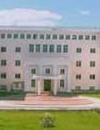 Fifth international workshop for fast reactors was opened in Obninsk
Fifth international workshop for fast reactors was opened in Obninsk
Today we are gathering here in the frame of Strategic Small Club for fast reactors. This club has been established at the beginning of century by the representatives of four countries - USA, France, Japan and Russia. So, now we are starting the regular session of our club, which is to discuss the actual problems of fast reactor technology application for energy supply and stable development of civilization, the head of the IPPE Anatoly Zrodnikov said. The participant geography is expanded, and this is one more proof of growing interest to the fast reactors around the world. The experts from 10 countries came in Obninsk to engage in the current event. The Russian Federation is represented by the delegations from twelve leading scientific organizations which play the key role in the development of new reactor technology for the Russian nuclear power plants.
 Hussein Khalil: I think you will be very strongly welcomed
Hussein Khalil: I think you will be very strongly welcomed
There are no final decisions because the U.S. Department of Energy is seeking the input from industrial teams around the world. Many different industrial teams are being asked to contribute their ideas. Now we know about the state of the technology; however, it is much more likely if this reactor will be built, say, in timeframe of 2020-2025 then we will need to use more established technology. In this case it has to be a sodium-cooled reactor.
Certainly, there is an interest for the longer term. For example, in the Generation-IV we consider the different reactor technologies as the lead-cooled reactor, because they offer some potential improvements. However the timeframe that envisioned for the GNEP encourages the using of proven technologies. This relates to the sodium reactor and probably also to the fuel type which would likely be either oxide or metallic fuel, with which we have the greatest experience.
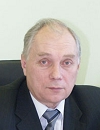 Vladimir Stepanov: Lead-Bismuth Will Work for Civil Needs
Vladimir Stepanov: Lead-Bismuth Will Work for Civil Needs
SVBR-75/100 reactor was born as conversion project from submarine reactor technology cooled by lead-bismuth coolant. Alexander Leipunsky initiated the work on development of this reactor in 50-ies of the last century. When actuality of using this direction in the navy was canceled, we had to find new usages for lead-bismuth. Naturally, we paid attention to civil nuclear power. Together with Boris Gromov, was being the research leader of this direction, we contacted with Rosenergoatom, in particular, with director general Eugene Ignatenko, we first conceived the idea to try to prolong lifetime of the first generation units with VVER-rectors by means of lead-bismuth technology. This moment is the start of SVBR lead-bismuth fast reactor development for civil nuclear power.
Vladimir Poplavsky: Both lead-bismuth and sodium will occupy its niches in future nuclear power
Up to now fast reactors with sodium coolant have been developed in Russia and in the world. This direction is developed sufficiently. So, BN-600 reactor demonstrates positive and reliable operation during 27 years. We believe that at present the technology of fast sodium cooled reactors is substantiated from the viewpoint of both serviceability and safety. Today the point is to improve its economic indices so that this system would be competitive not only "inside" nuclear power, but in comparison with other power sources. Today there is a task to develop NPP project with large power fast sodium cooled reactor, which should be both safe and economy. If to say about technology of heavy coolants, as it is known, there is certain experience of using lead-bismuth eutectic in reactor for atomic submarine. But if we are going to say about development of this technology for its use at stationary power plant, we have to take into account many of its features. In order to demonstrate serviceability of reactors with heavy liquid metal coolant, joint project between IPPE, OKBM and GIDROPRESS is under development - SVBR-75/100 reactor.



























